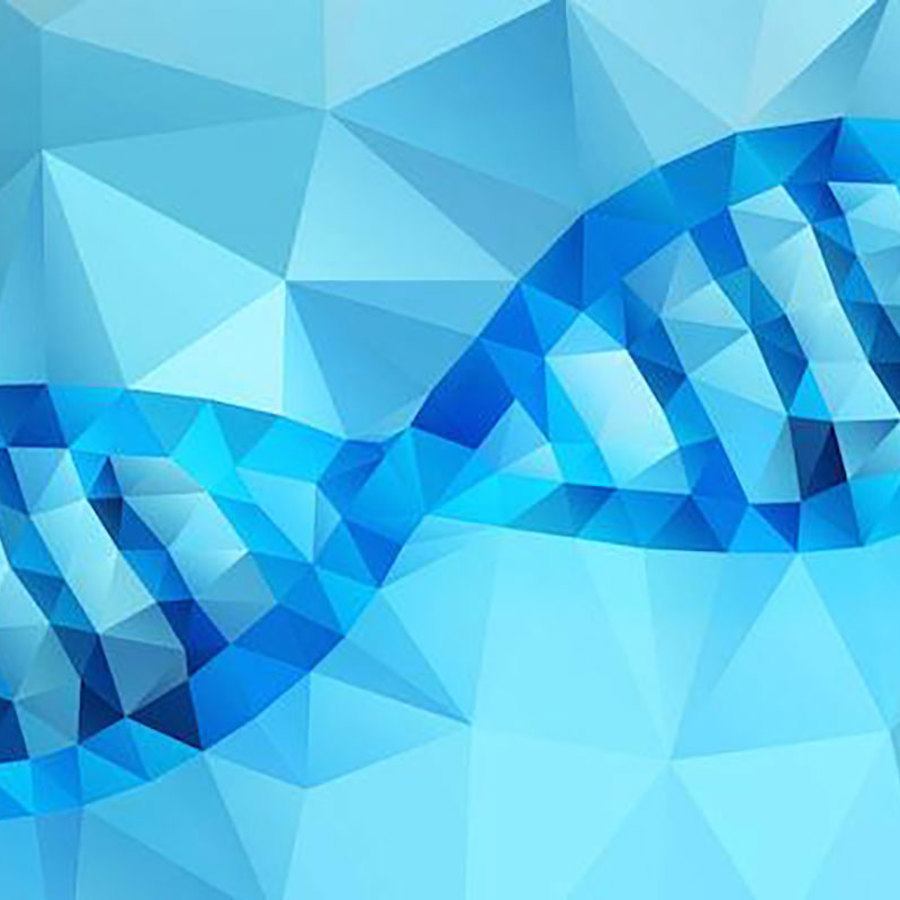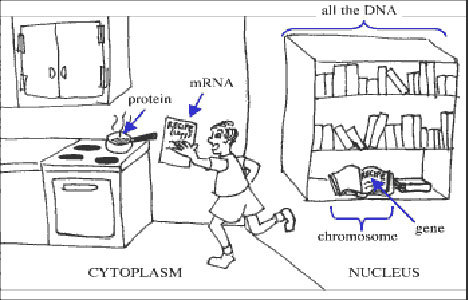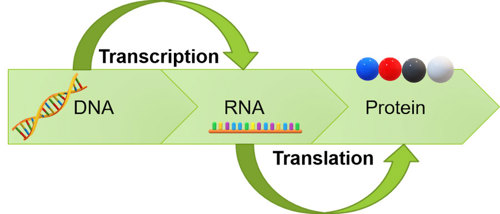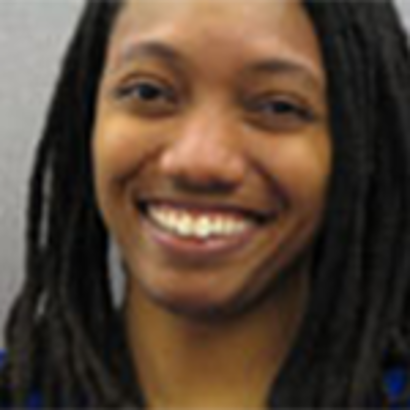
What does DNA do?
May 28, 2004

- Related Topics:
- DNA basics,
- Transcription and translation,
- Genes to proteins,
- Common questions
A middle school student from Michigan asks:
DNA is information. Think of DNA as a collection of cookbooks that contain all the recipes for making and running living things like worms, plants, birds, and people.
These recipes determine your height, give you your eye and hair color, and tell your body to have two arms and legs, instead of branches and leaves, or tentacles. Almost all of the trillions of cells in your body contain their own copy of the entire cookbook collection in a compartment called the nucleus.

Let's call each cookbook in the collection a chromosome. Humans have 23 pairs of chromosomes, one from each parent. That's 46 total in each cell. So that would mean each cell has two editions of 23 different cookbooks.
In our example, each recipe in the cookbooks is like a gene. For humans, this cookbook collection would need to contain at least 25,000 recipes! So how does DNA work?
Imagine that you are making some food in the kitchen. Now imagine that you keep all of your cookbooks on a shelf in the living room.
So how are you going to make a recipe if you're not in the same room as your cookbook? You go to the living room and copy it down, and then you bring the copy into the kitchen. When you get to the kitchen, you get the ingredients, follow the recipe, and then you have your dish!
In this example, the recipe is a gene that is copied. In the cell, the copy of the gene is another type of molecule called messenger RNA. When a DNA gene is copied into RNA, it’s called transcription.
Since there are two of each cookbook (or chromosome), the recipe is copied twice, once from each cookbook. Each RNA copy of the recipe is taken from the living room (the nucleus) to the kitchen (the cytoplasm) where the recipe is converted from words into food.
In the cell, the finished product of all this effort is called a protein. The process by which an RNA recipe is converted into a finished protein is called translation.

Besides being in the food we eat, proteins do almost everything in the cell – they are what the information in DNA is converted into. They make up your cells, they break down your food to give you energy, they make up the antibodies of your immune system, and do just about everything else to keep your body running.
So there you have it. DNA’s job is to provide the information on how to build and operate an organism. It does this by having its code copied to messenger RNA and then being translated from the messenger RNA into protein. The proteins are the real workhorses; in most cases, proteins that do just about everything the cell needs are the end product of all that effort.

Author: Joylette Portlock
When this answer was published in 2004, Joylette was a Ph.D. candidate in the Department of Genetics, studying cardiovascular gene therapy in Michelle Calos’s laboratory. Joylette wrote this answer while participating in the Stanford at The Tech program.
 Skip Navigation
Skip Navigation
